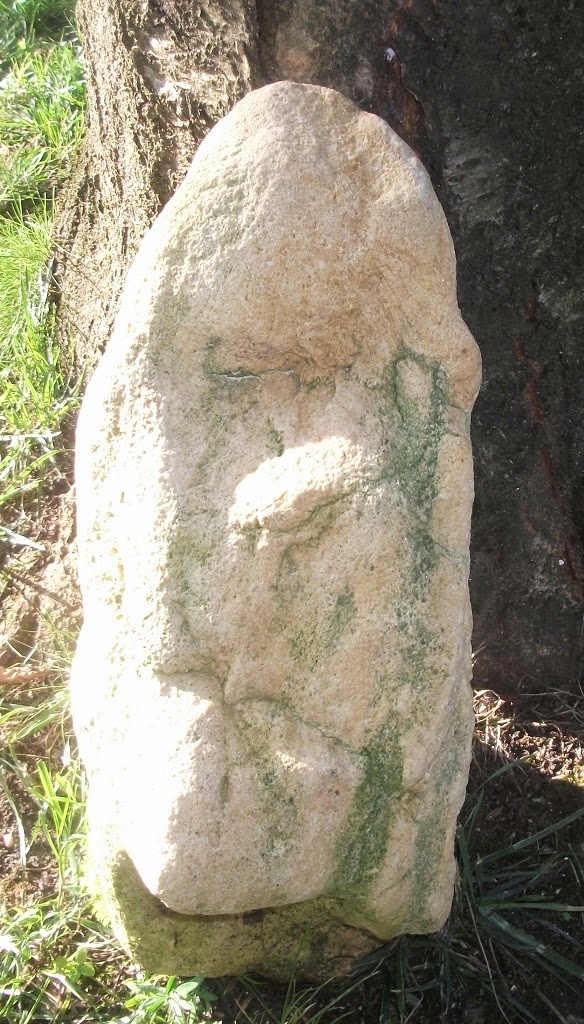Henri Valentie find, Île d'Oléron, France, 39cm /17cm and 23cm thick, pink sandstone
The "one eye open, other eye shut or missing" art motif originated in the Lower Paleolithic about 500,000 years ago and persisted for hundreds of thousands of years. It would seem impossible for such continuity of a cultural tradition if we did not have the example of the Acheulean handaxe technology which persisted for about one million years.
Right profile view of the bust
Here is a view of the left side of the face with mark ups added. The line extending from the left eye of the face is a ground gouge made in the stone to represent a distortion or wound. This is commonly seen in this motif. The peak of the human's head here may also be interpreted as a possible representation of the profile of a mammoth, as seen in the posting just prior to this one. (Click photos to expand).
Flint Ridge, Ohio, human bust with arrow pointing to manufactured line of distortion along the left side of the face. A round feature like an eyeball appears out of its socket on the cheek of the figure.
One eye shut bust from the collection of Ursel Benekendorff. Photo Copyright (c) Ursel Benekendorff, All Rights Reserved. This bust is dated to c. 500,000 years old. A sea urchin fossil serves as the closed left eye of the German bust.






No comments:
Post a Comment